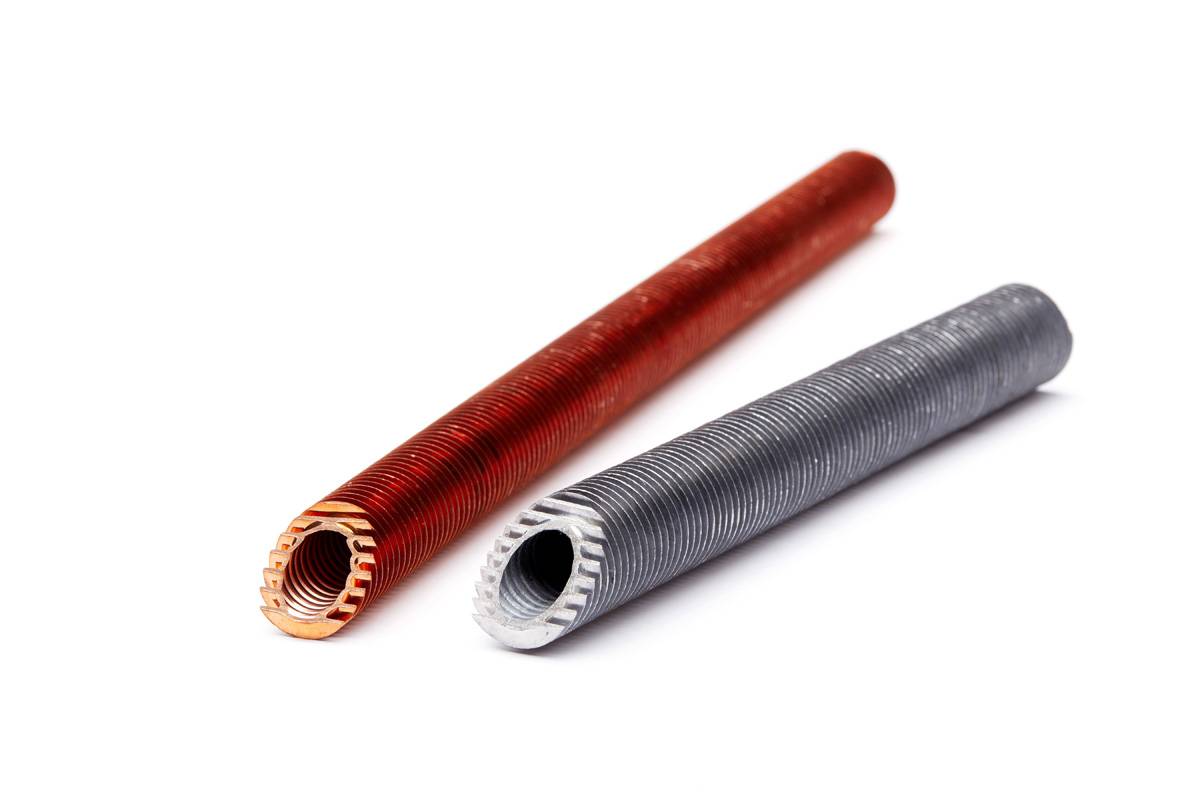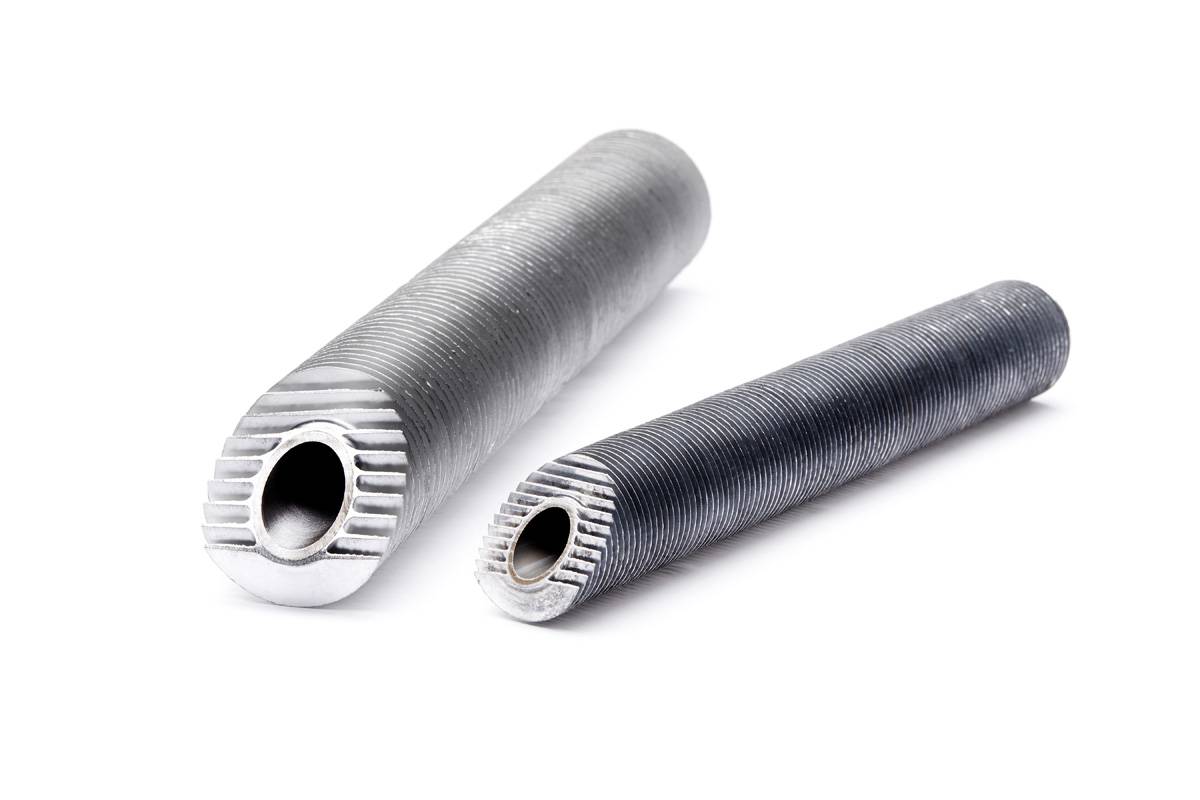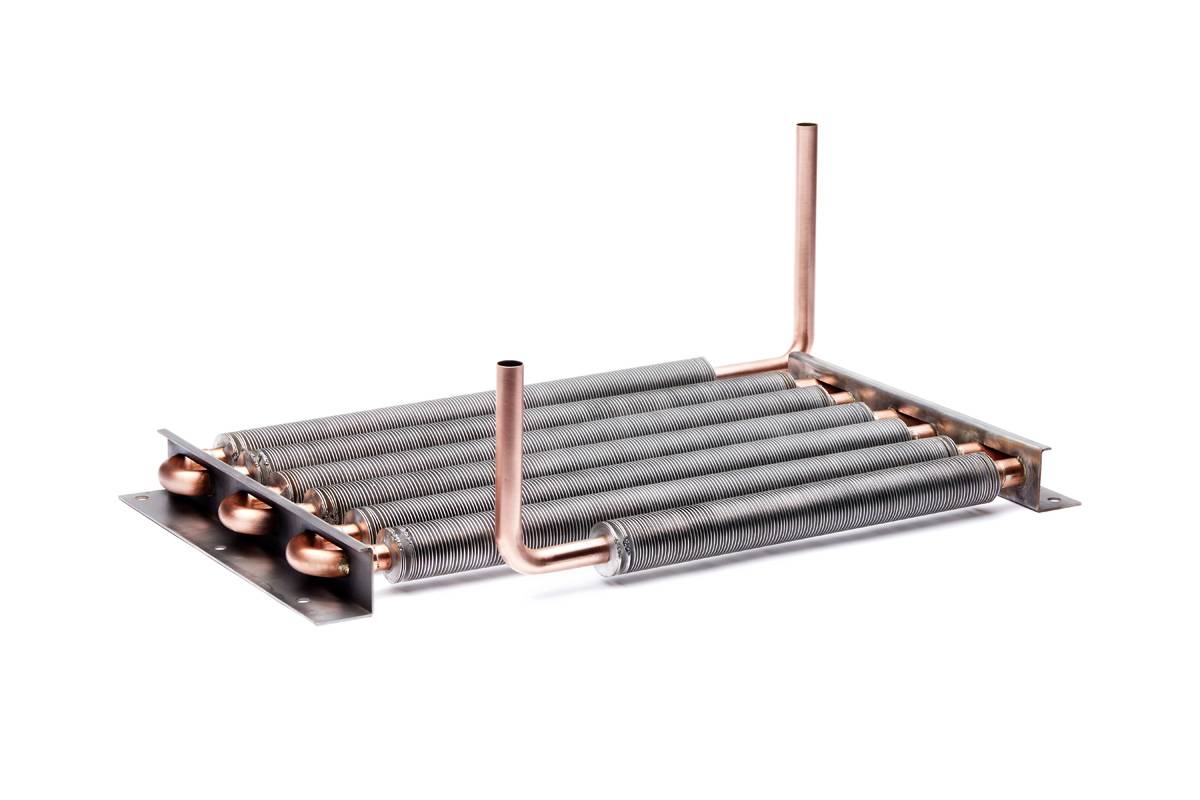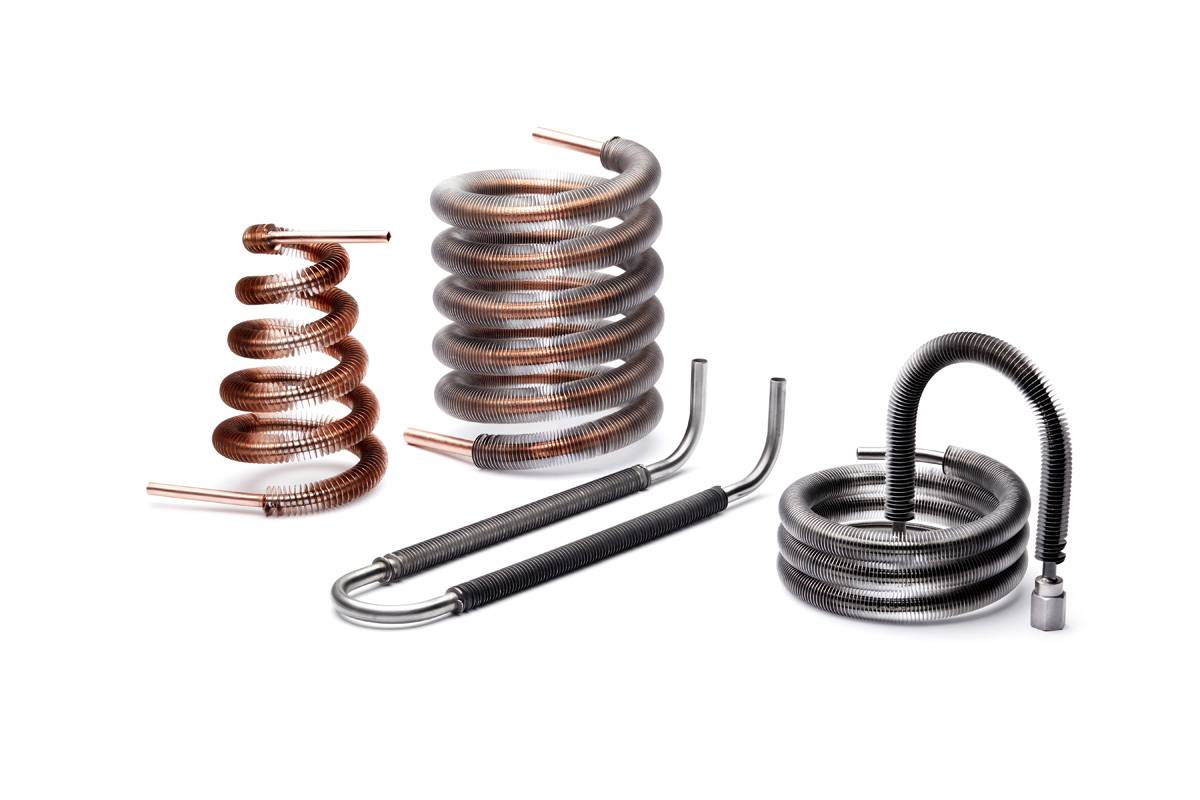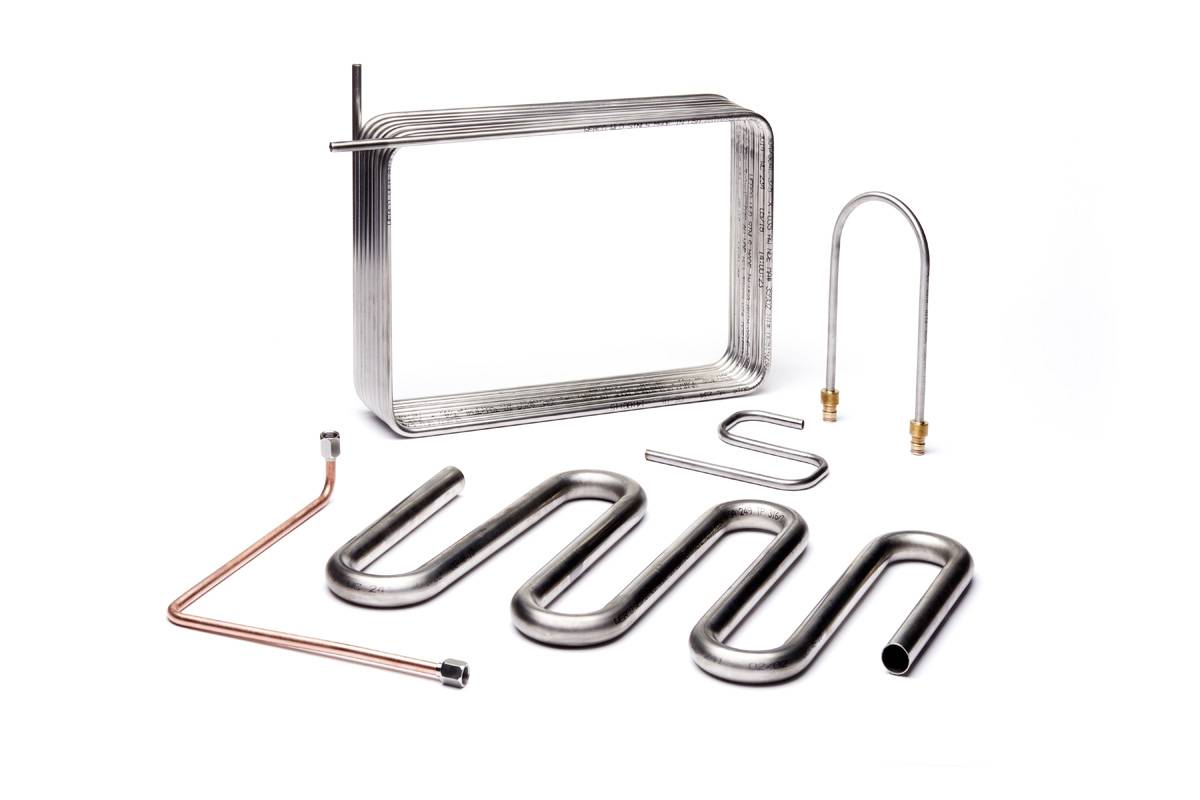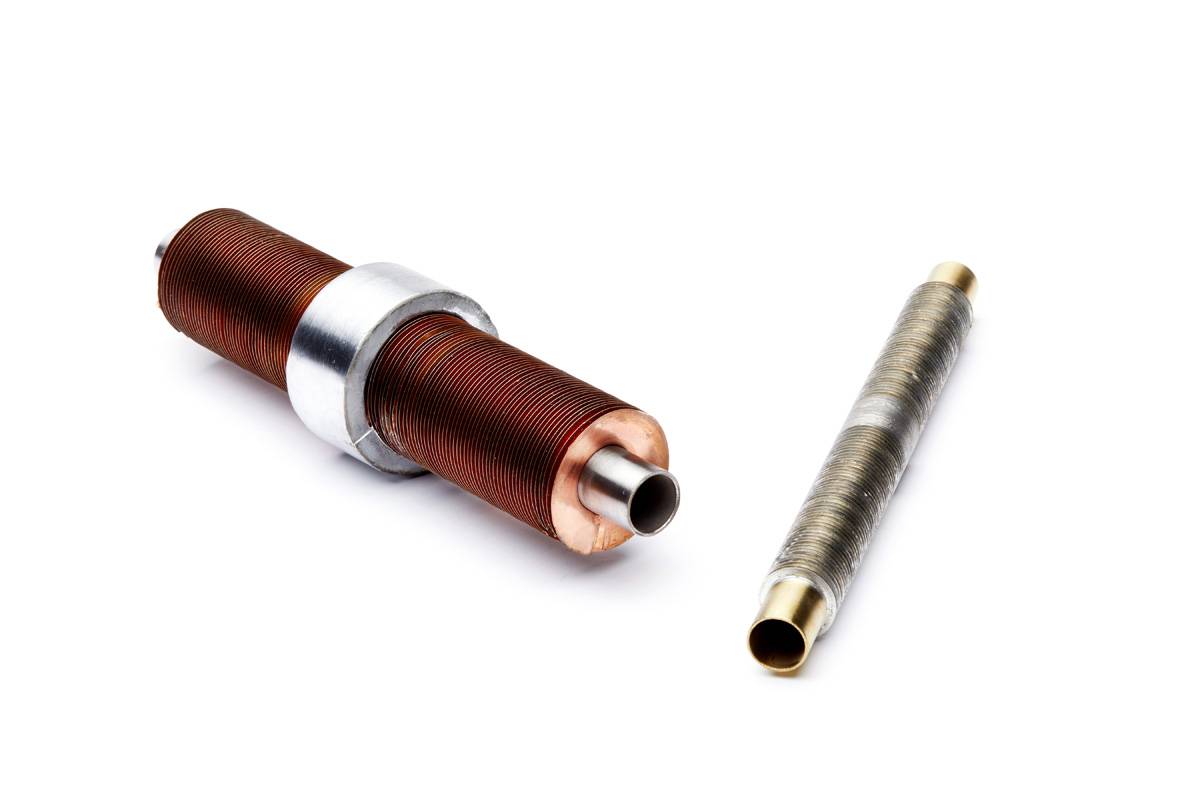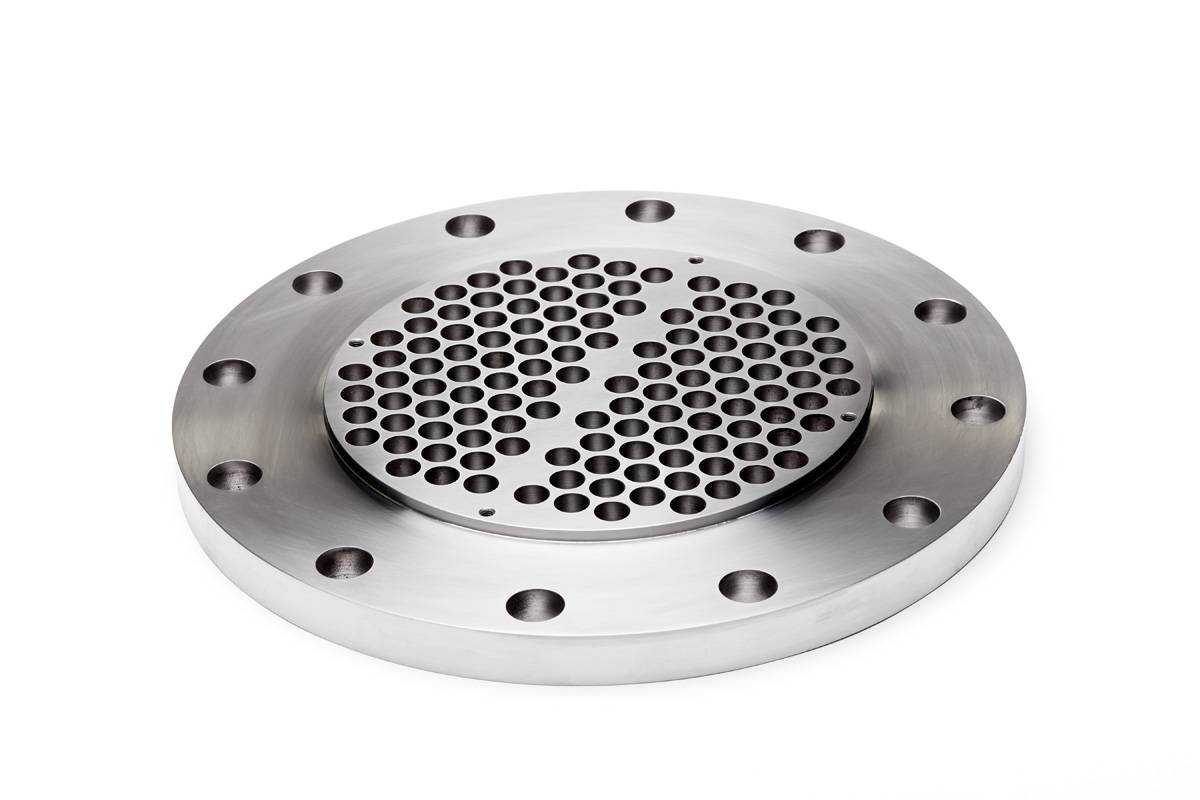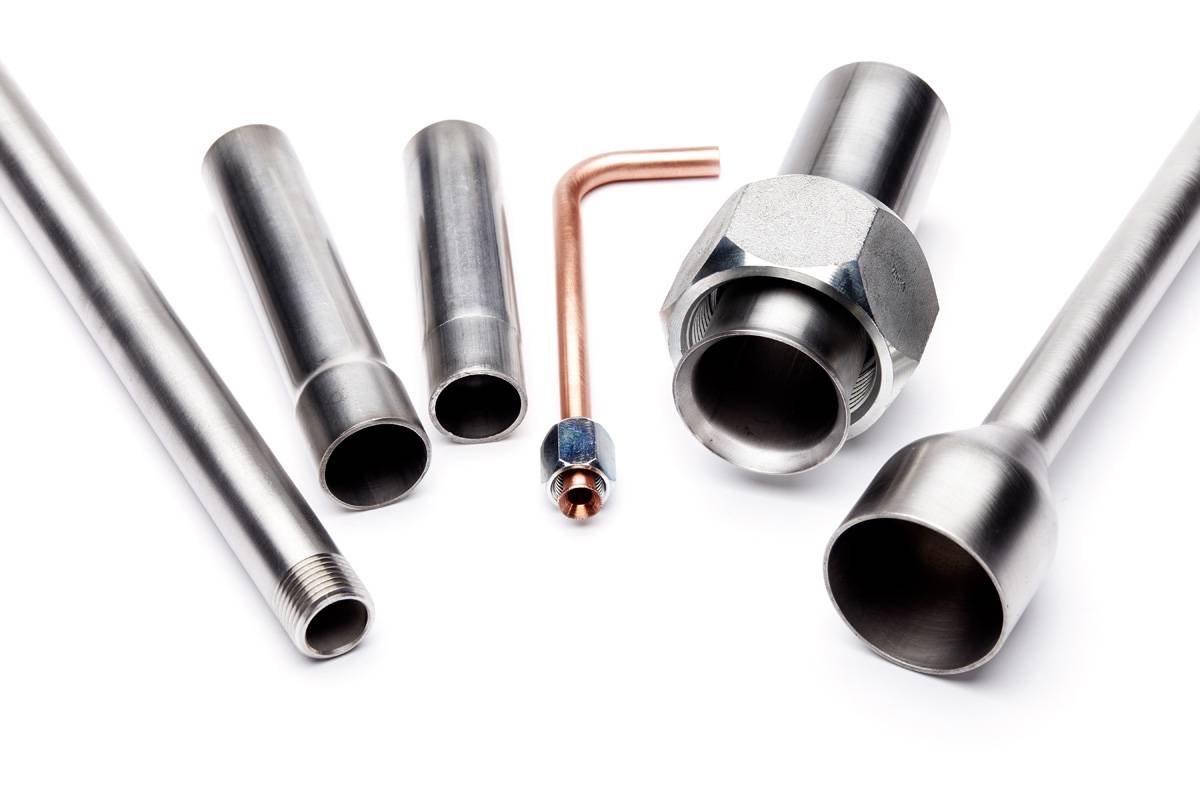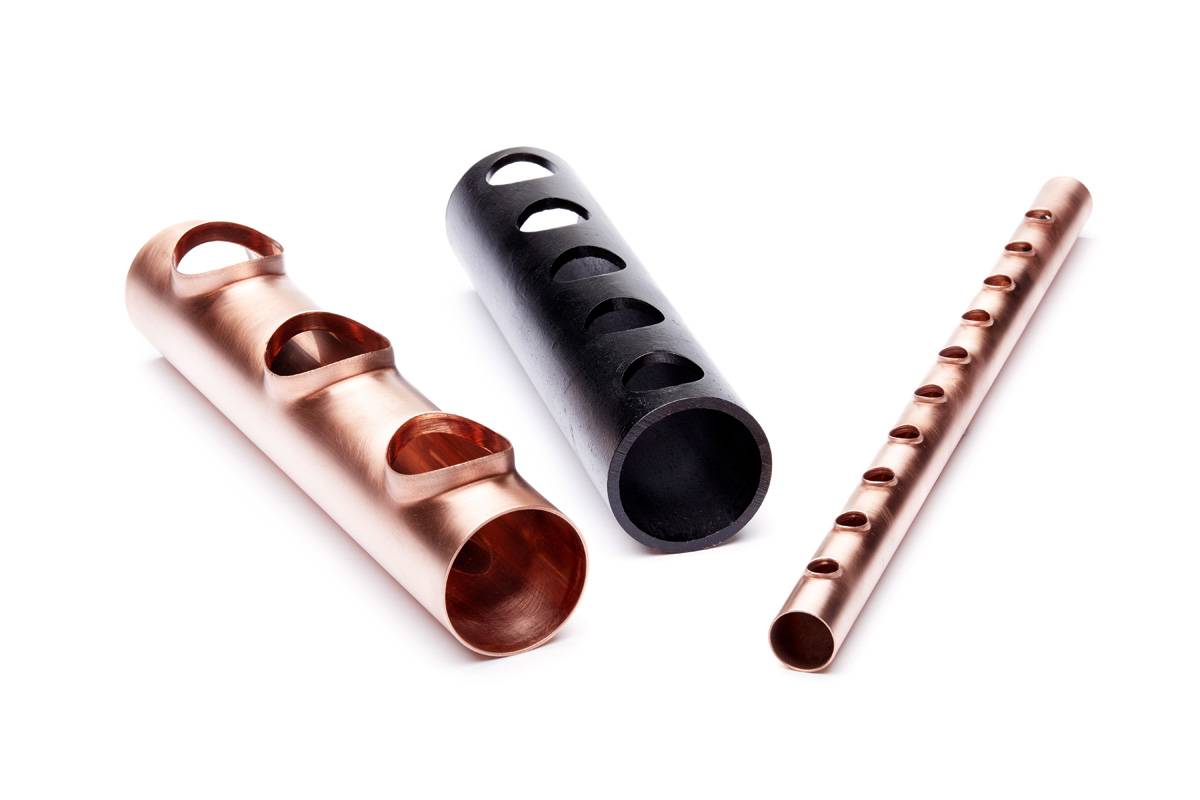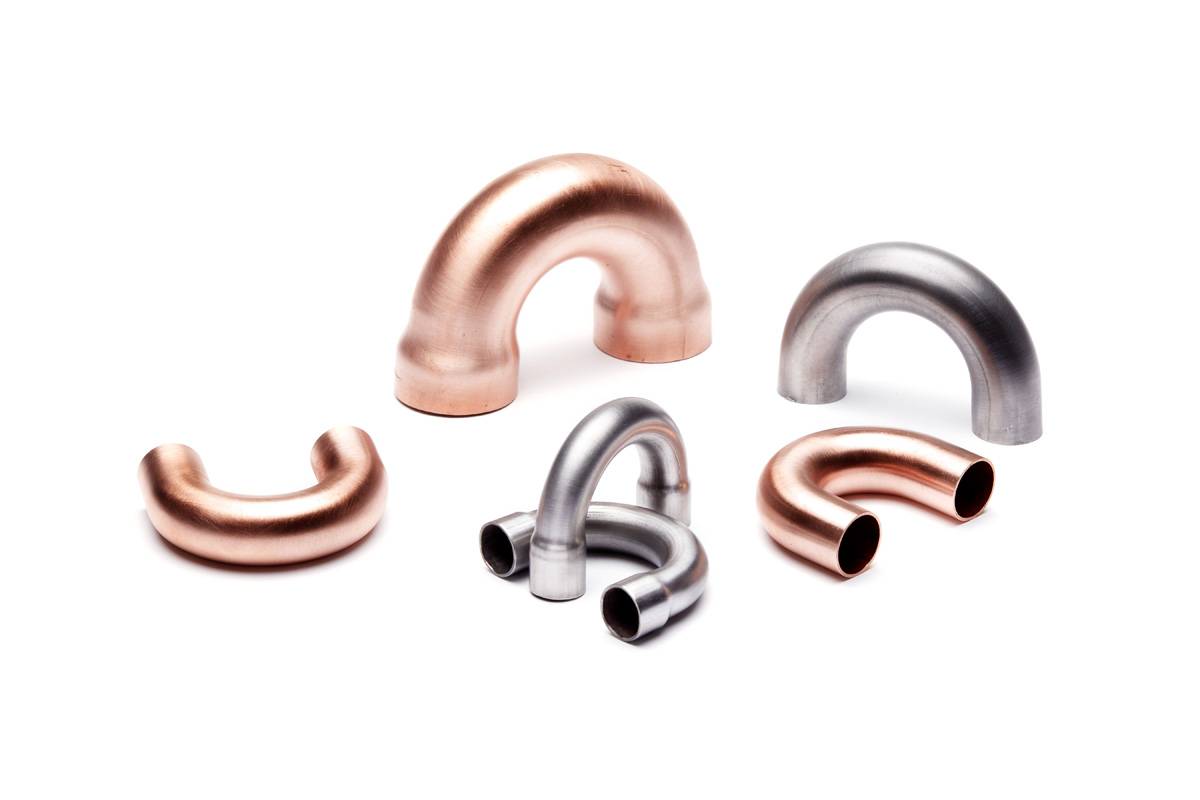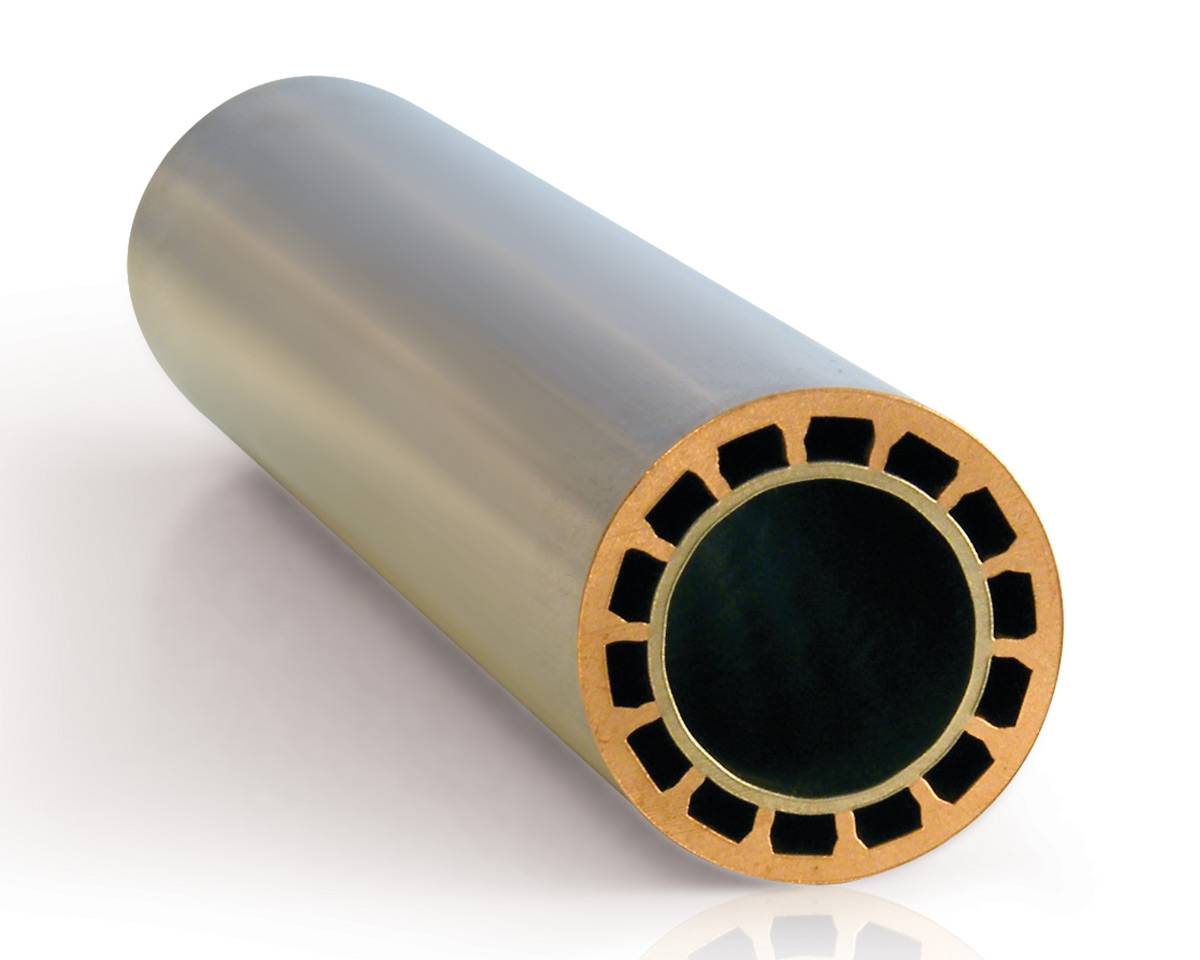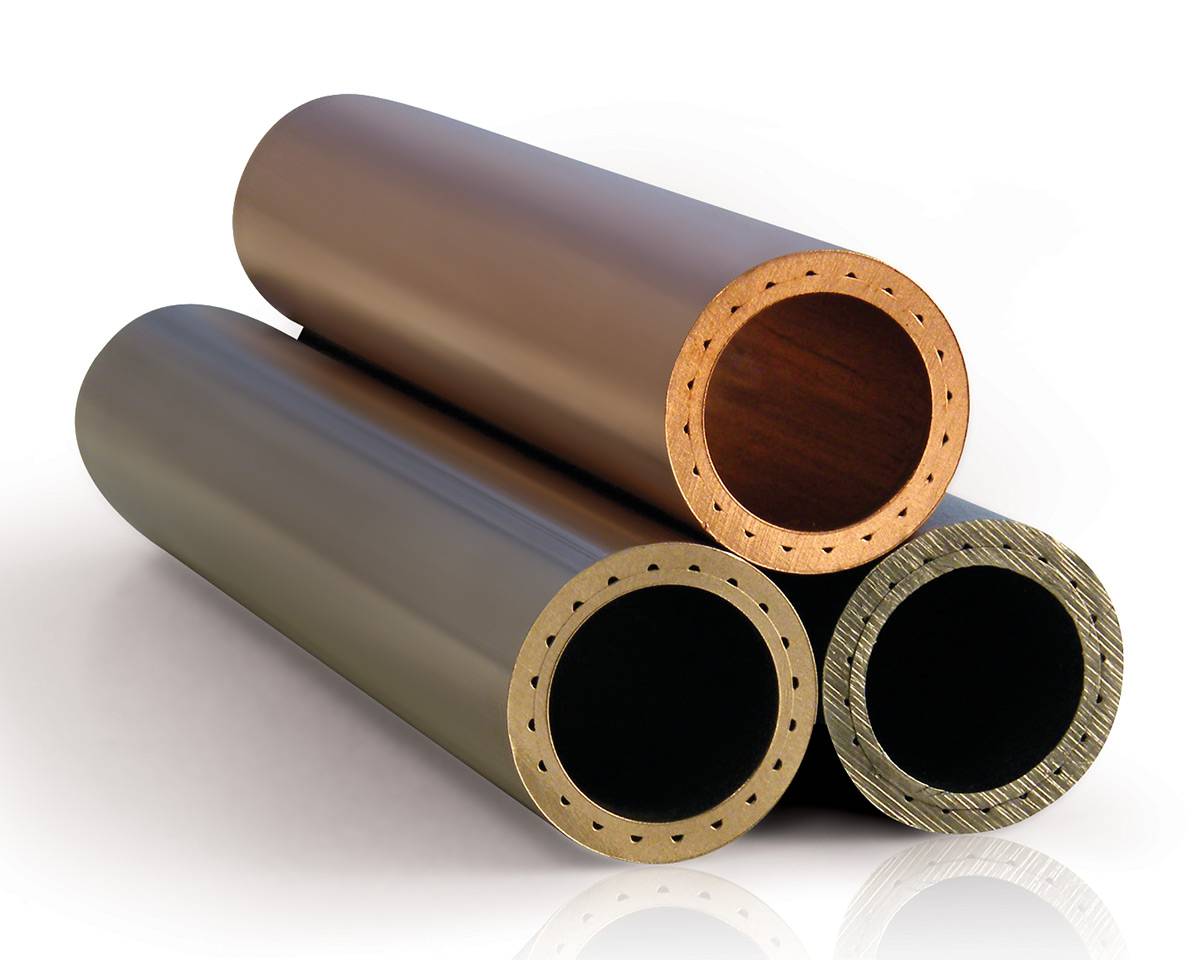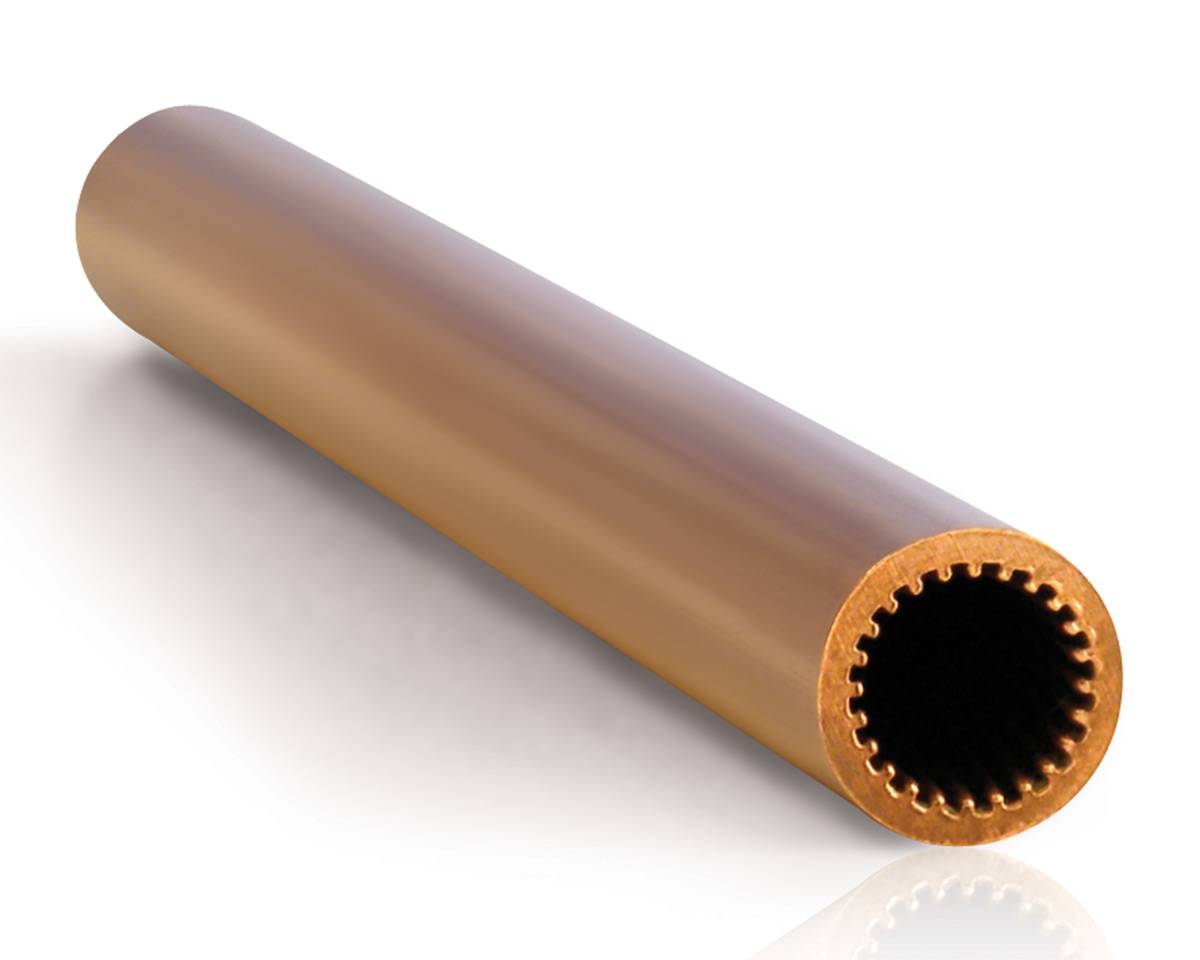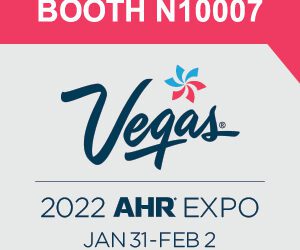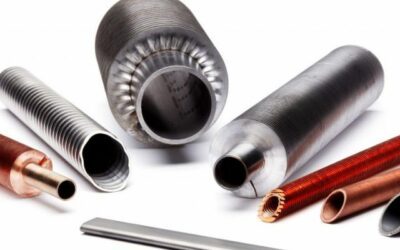[vc_row][vc_column][vc_empty_space][vc_column_text]
In a nutshell, an applied fin tube (also known as a Tube-Fin Heat Exchanger) is literally what the name suggests — a tube where the fin is applied as a separate material. This creates an annular fin helically wound around the tube that enables an enhanced surface to optimize cooling efficiency.
Applied fin tubes can come in many variations and multiple styles — even under the same tube manufacturer. Knowing which type of fin tube to use and what materials it should include can be critical to the success of the product. Use this blog as a guide.
An individually finned tube exchanger is characterized by helical serrated, slotted, or wavy fins in circular profiles. Fins are attached to the tubes by a tight mechanical bond through tension winding, soldering, brazing, or welding.
One perk to applied fin tubes is you can join 2 dissimilar materials in order to utilize the advantages of both. Similar metals are also common — say a copper tube with a copper fin. It depends on the application. Each material has its own advantages and considerations, depending on end use and effect on performance and efficiency.
For example, an aluminum fin can be applied to a stainless steel tube to maximize air cooling — a very common approach in the cooling industry.
Copper fin delivers superior heat transfer optimization — but can be susceptible to certain corrosion. On the other hand, stainless steel fin has a much lower heat transfer co-efficient but is highly resistant to corrosion and has superior tensile strength properties.[/vc_column_text][vc_empty_space][vc_column_text]
Advantages & Factors to Consider in Applied Fin Tubing
[/vc_column_text][vc_empty_space][vc_row_inner][vc_column_inner width=”1/2″][vc_column_text]The beauty of applied finned tubes is you can use alternative materials to enhance cooling efficiency, corrosion resistance, and control material costs.
Another advantage to applied fin tubes is to have balanced thermal conductance on both sides of the heat exchangers. This allows for a minimum-size heat exchanger. Applied finned tubes support this by a large range of fins per inch (fpi) and fin heights to match the conductance requirements.[/vc_column_text][/vc_column_inner][vc_column_inner width=”1/2″][vc_single_image image=”2728″ img_size=”medium” css=”.vc_custom_1565881927322{margin-right: 60px !important;margin-left: 40px !important;border-top-width: 3px !important;border-right-width: 3px !important;border-bottom-width: 3px !important;border-left-width: 3px !important;border-left-color: #000000 !important;border-left-style: solid !important;border-right-color: #000000 !important;border-right-style: solid !important;border-top-color: #000000 !important;border-top-style: solid !important;border-bottom-color: #000000 !important;border-bottom-style: solid !important;border-radius: 3px !important;}”][/vc_column_inner][/vc_row_inner][vc_column_text]The right coatings can also be essential to the success of a bent applied fin tube — such as our Dura IB Brazed Edge Tension Finned Tube or our Dura IS Soldered Edge Tension Finned Tube. The manufacturing process metallically bonds the fin to the tube using a metal filler. By solidifying and strengthening the bond of the fin, it can better endure bent formation or provide a surface coating.
That’s why applied fin exchangers are used extensively in heat recovery systems, as condensers and evaporators in transit cooling, generator coolers in electric power plants, oil coolers in propulsive power plants, air cooled heat exchangers in process and power industries, and steam coils in processing plants.[/vc_column_text][vc_empty_space][vc_column_text]
Material Considerations of Applied Fin Tubes
There are generally 4 fin material types.
- Stainless steel
- Carbon steel
- Copper
- Aluminum
Options for tube materials are nearly unlimited depending on the Durafin® applied fin tube you are considering. There can be limitations depending on the material and function of the end product. It’s best to contact a sales specialist to help choose the right tube and best materials — based on manufacturability and performance needs of the end product.
Aluminum is a very common fin material. It’s affordable, very formable and easy to apply.
To achieve a high heat transfer, copper or aluminum fin material is generally preferred. The tradeoff to copper is it’s more expensive — but its superior rate of heat exchange can be worth the investment.
If the tube will be exposed to acidic tube side conditions and a high heat transfer is needed, then a stainless steel fin with a copper tube is ideal. If both sides are exposed to corrosion, then a stainless fin combined with a stainless tube works best.
For an application that is low cost and corrosion is not an issue, carbon steel is ideal as an affordable option. Carbon steel performs well in rough service applications.
Coatings can also be added to the fin or tube for protection against corrosion and the elements. [/vc_column_text][vc_empty_space][vc_column_text]
Best Practices in Selecting Applied Fin Tubes
Which type of applied fin tube should you use — what materials should it include? That depends on the end product under the following considerations:
- Its operating environment
- Thermo-physical properties of fluids
- Thermo-physical properties of materials
- Mechanical/structural design
- Amount of heat exchange needed
- Cost
- Maintenance
[/vc_column_text][vc_empty_space][/vc_column][/vc_row][vc_row][vc_column][vc_row_inner][vc_column_inner width=”1/3″][vc_single_image image=”2736″ img_size=”full” alignment=”center” css=”.vc_custom_1565884964535{margin-bottom: px !important;border-top-width: 3px !important;border-right-width: 3px !important;border-bottom-width: 3px !important;border-left-width: 3px !important;border-left-color: #000000 !important;border-left-style: solid !important;border-right-color: #000000 !important;border-right-style: solid !important;border-top-color: #000000 !important;border-top-style: solid !important;border-bottom-color: #000000 !important;border-bottom-style: solid !important;border-radius: 3px !important;}”][/vc_column_inner][vc_column_inner width=”2/3″][vc_column_text]Before deciding the materials and type of applied fin tube, be aware of the pressure the heat exchanger will operate under — and what working temperature you require.
Pay attention to the environment the tube will operate in. A fin tube with a high count of 15 fins per inch won’t function well in a dirty environment, for example — it will clog in a week and won’t perform well. [/vc_column_text][/vc_column_inner][/vc_row_inner][vc_row_inner][vc_column_inner][vc_empty_space][vc_column_text]The beauty of applied fin tubes is the material wrapped around the tube to create edge tension — this way the tube and the fin expand together. With applied fin tubes, it can be decades before fins start to come loose — lasting 3 or 4 times longer than a metal plated approach.
An applied fin tube combines property advantages of varying materials. It delivers optimal cooling efficiency that stands the test of time. [/vc_column_text][/vc_column_inner][/vc_row_inner][vc_empty_space][vc_separator color=”black”][/vc_column][/vc_row][vc_row][vc_column][vc_empty_space][vc_column_text]
Download Our Free Finned Tube Buying Guide
Want to not screw up your finned tube project? Our FREE GUIDE tells you everything you need to know. Download yours today![/vc_column_text][vc_empty_space][vc_empty_space][/vc_column][/vc_row][vc_row][vc_column][vc_column_text]
Have a question about fin tubes? We’re happy to help! Schedule a FREE consultation!
[/vc_column_text][vc_empty_space][/vc_column][/vc_row][vc_row][vc_column][vc_column_text]



